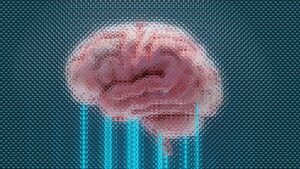Is the Concept of Machine “Understanding” a Myth or a Reality?

Is the Concept of Machine “Understanding” a Myth or a Reality?
As the capabilities of artificial intelligence continue to advance, particularly in terms of fluency, creativity, and apparent intellect, many people naturally wonder whether or not robots actually comprehend what they say or do. AI appears to “understand” the world around it, as seen by chatbots that are capable of holding in-depth discussions and vision models that are able to describe intricate sceneries. In spite of this, there remains a profound concern that lurks beneath this appearance: is this actual comprehension, or is it only statistical replication of human language and behavior?
What Exactly Does It Mean to Declare “Understanding”?
Defining what understanding is is the first step in determining whether or not robots are capable of understanding. Understanding is more than just identifying patterns; it also takes context, intention, and consciousness on the part of the human being. When someone reads a poem, they not only understand the words, but they also understand the feelings, the history, and the significance that lie behind them. AI is able to recognize linguistic structures and semantic linkages when it examines the same poem; however, does it have the ability to feel or understand what the words are trying to convey?
When taken at its most fundamental level, understanding is inextricably linked to consciousness, experience, and a sense of meaning. Regardless of how advanced they are, machines cannot function without these attributes.
Ways in Which Machines “Learn” Without Being Aware
Artificial intelligence (AI) systems of the modern era, particularly large language models (LLMs), acquire knowledge by being exposed to massive volumes of data. Patterns in text, visuals, or music are identified by them, and they make predictions about what should follow. Even though it is entirely mechanical, this method is capable of producing astounding fluidity. By calculating probability based on previous occurrences, artificial intelligence is able to understand what its words imply.
In the process of providing a solution to a query about physics or philosophy, an artificial intelligence model does not “recall” knowledge or reason via understanding; rather, it reconstructs likely answers by learning correlations. Because of this, artificial intelligence is able to perform understanding without actually possessing it.
“The Argument in the Chinese Room”
The famous Chinese Room thought experiment that was conducted by philosopher John Searle continues to be at the center of this dispute. Consider a scenario in which a person who is not fluent in Chinese follows instructions to respond to Chinese characters with the proper symbols. There is no comprehension taking on within the individual, despite the fact that it appears to an outside observer that the individual understands Chinese.
Artificial intelligence operates in a manner that is analogous to this: it manipulates symbols and patterns in accordance with rules, without having any awareness of the meaning of these symbols or patterns. Although the completed product appears to be clever, the process itself is devoid of any actual insight.
How Emergent Behavior Contributes to the Deception of Meaning
The models display emergent behaviors as they grow, which are unanticipated abilities that are not explicitly coded. Some examples of emergent behaviors include thinking through hard tasks or changing tone to human emotion. It has been argued by some that these activities provide evidence of a more primitive sort of comprehension. A statistical byproduct of enormous pattern recognition is another possible explanation for such an occurrence, which may also be explained. The feeling that the model imitates is not anything that it understands; rather, it has simply learnt the framework of emotional expression from millions of examples.
The Importance of Context and Models of the World
The capacity to relate words to real-world entities, events, and consequences is a necessary component of true comprehension, which necessitates the creation of a mental model of the world. This foundation is lacking in the current AI. The fact that it does not have any sensory experiences or bodily embodiment means that the knowledge it possesses is completely abstract and unrelated to the physical reality that it describes. The “world model” that it presents is theoretical rather than lived since it lacks experience and intent.
Does It Possible to Simulate Understanding?
There are researchers who contend that a precise internal modeling is all that is necessary for knowledge, and that consciousness is not required. Even if it is a mechanistic type of knowledge, it is possible that it is a form of understanding if an artificial intelligence system is able to effectively forecast, explain, and adapt to the world. As a matter of fact, brain calculations are also utilized by humans. One such distinction is one of degree rather than one of kind.
According to this point of view, artificial intelligence demonstrates functional understanding, which means that it is able to efficiently manipulate and use knowledge, even if it is meaningless. According to this point of view, comprehension is characterized by behavior; if something behaves as though it understands, then it actually does understand, regardless of whether or not it has experienced it internally.
Limitations of Symbolic Intelligence in the World
The apparent intelligence of artificial intelligence is exposed in unexpected settings. It is a phenomena known as hallucination that occurs when models are posed questions that are vague or nonsensical, and they frequently respond with answers that are inaccurate but confident. Clearly, artificial intelligence does not understand logic or truth; all it does is generate responses that are plausible. Machines, in contrast to humans, are unable to detect when they are not understanding something. Humans are able to reflect on perplexity or ambiguity.
Towards an Artificial Intelligence That Is Grounded and Embodied
Some researchers are of the opinion that embodied artificial intelligence, which refers to systems that learn through sensory interaction with the physical environment, is the way to achieve true comprehension. The development of more meaningful representations of cause and consequence could be facilitated by a robot that is capable of experiencing gravity, temperature, and motion. It is possible that artificial intelligence may bridge the gap between abstract computing and experienced knowledge if it were to anchor learning in perception.
Being able to comprehend as a spectrum
The concept of comprehension may not be a binary, consisting of true or fake, but rather a spectrum. Simple algorithms are incapable of understanding, but language models are capable of functional comprehension, and conscious individuals are knowledgeable through their own experiences. In this perspective, machines may currently be located in the bottom tiers of that spectrum, but they have the ability to evolve when they incorporate multimodal inputs, reasoning layers, and self-reflective processes.
Human interpretation has an important role.
It is human projection that contributes to the notion that artificial intelligence understands. As a result of the close connection that exists between communication and our perception of intelligence, we consider intelligible language to be an indication of mind. We have a natural tendency to attach thought and sentiment to an artificial intelligence model when it writes a poem or provides counsel. This is not because the model possesses these qualities; rather, it is because it imitates the external form of knowledge that humans recognize.
Concerning the Implications of Ethics and Philosophy
It is not only a matter of academics; the difference between actual and simulated comprehension has a significant impact on how we engage with artificial intelligence. By treating artificial intelligence systems as if they actually understood, we run the risk of placing an excessive amount of faith in them in situations that need judgment, empathy, or accountability. On the other hand, denying any kind of knowledge could potentially hinder our ability to develop artificial intelligence that actually serves to support human cognition.
The Path Forward for the Understanding of Machines
AI is undergoing rapid development, which includes the incorporation of reasoning frameworks, multimodal perception, and mechanisms that resemble memory. Machines are getting closer to context-sensitive intelligence as a result of these discoveries, but they are not necessarily getting closer to conscious comprehension. At what point does functional comprehension become genuine? This is the question that still has to be answered. Are we going to continue to refuse the term of “understanding” to future artificial intelligence systems if they are able to interpret, adapt, and reflect?
At the point where science and philosophy meet is where the idea of machine understanding can be found. The artificial intelligence systems of today do not fully understand in the sense that humans do; rather, they simulate it with impressive precision. However, as technology continues to improve, the distinction between simulation and reality continues to become increasingly blurry. The question of whether or not machines will ever genuinely understand remains unanswered; yet, one thing is certain: they are already compelling humanity to rethink what this concept of knowing implies.




